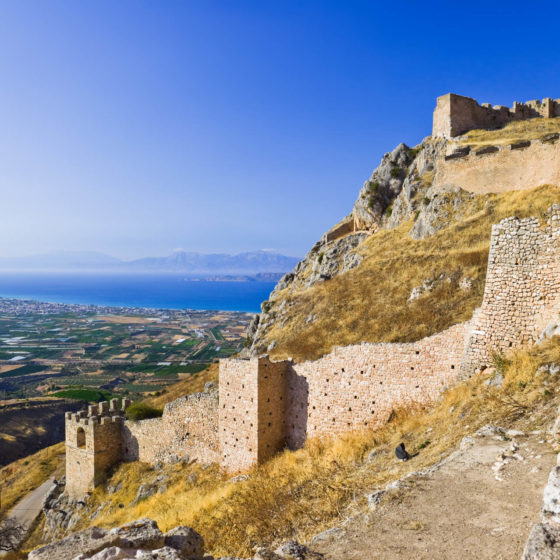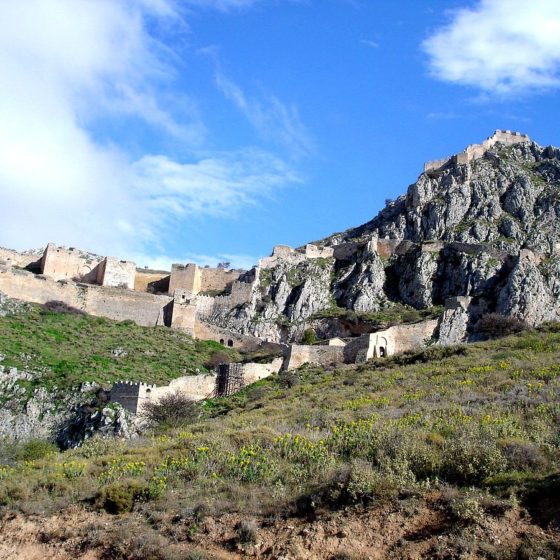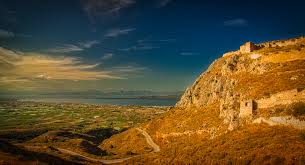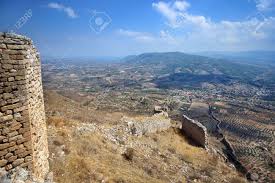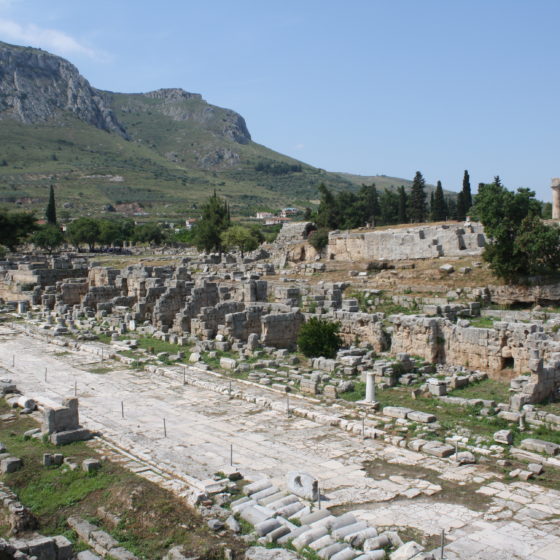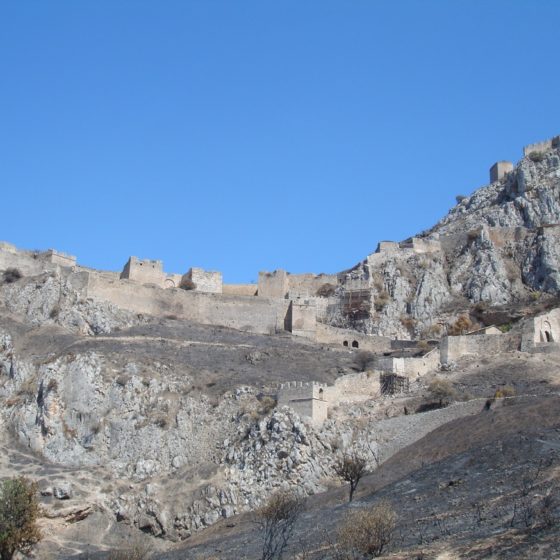Half-day Ancient Corinth tour starts with a 45-mile drive along the National highway. We will reach the well-known Corinthian canal or else Isthmus canal that connects the Saronic Sea and the Corinthian Sea.
After a short stop for pictures, we continue with a ten-minute drive through the orange and lemon tree fields and arrive at Ancient Corinth and its unique museum, the Temple of Apollo-the God of Oracles and the Sun, the Roman baths and finally the Vima (step) from where St. Paul preached to the Corinthians in 52 A.D.
We will continue with a visit at Acrocorinth.
Acrocorinth “Upper Corinth”, the Acropolis of Ancient Corinth, is a monolithic rock overseeing the ancient city of Corinth, Greece. “It is the most impressive of the Acropolis in mainland Greece”, in the estimation of George Forrest. Acrocorinth was continuously occupied from archaic times to the early 19th century. The city’s archaic acropolis, already an easily defensible position due to its geomorphology, was further heavily fortified during the Byzantine Empire as it became the seat of Hellas and later of the Peloponnese. It was defended against Crusaders for three years by Leo Sgouros.
Afterwards it became a fortress of the Frankish Principality of Achaea, the Venetians and the Ottoman Turks. With its secure water supply, Acrocorinth fortress was used as the last line of defence in southern Greece because it commanded the Isthmus of Corinth, repelling foes from entry into the Peloponnese peninsula. Three circuit walls formed the man-made defense of the hill. The highest peak on the site was home to a temple to Aphrodite which was converted to a church and then became a mosque. The American School’s Corinth Excavations began excavations on it in 1929. Currently, Acrocorinth is one of the most important medieval castle sites of Greece.
In a Corinthian myth related in the 2nd century CE to Pausanias, Briareus, one of the Hecatonchires, was the arbitrator in a dispute between Poseidon and Helios, between the sea and the sun: his verdict was that the Isthmus of Corinth belonged to Poseidon and the acropolis of Corinth (Acrocorinth) to Helios.
The Upper Pirene spring is located within the encircling walls. “The spring, which is behind the temple, they say was a gift of Asopus to Sisyphus”. The later knew, so runs the legend, that Zeus had revished Aegina, the daughter of Asopus, but refused to give information to the seeker before he had a spring given him on the Acrocorinth.
Finally, we drive back to Athens by the same route.
The duration of the tour is approximately 5 hours.
Entrance fee required per person :
8 Euros for Ancient Corinth and the Museum
4 Euros for Acrocorinth
Sites Opening Hours
Winter : From November 1 to March 31 08:00 until 15:00
Summer : From April 1 to October 31 08:00 until 20:00

